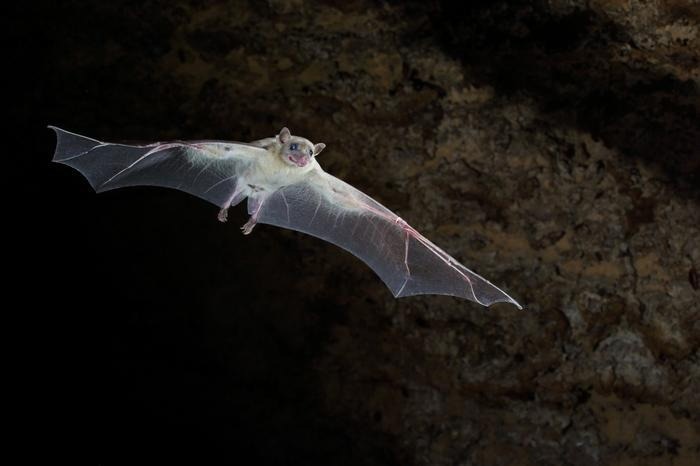In an imaginative collaborative measure taken between geographers and zoologists from Tel Aviv University, a new study using bats to map Urban Heat Islands in Gush Dan discloses that during the winter months, the air over the Ayalon Highway could be up to 5 ℃ warmer compared to the air in Yarkon Park.

Egyptian fruit bat. Image Credit: Tel Aviv University
The interdisciplinary study was headed by Professor Yossi Yovel and Dr. Aya Goldshtein of the Bat Lab for Neuro-Ecology, the School of Zoology, the Sagol School of Neuroscience, and the Steinhardt Museum of Natural History, in partnership with Professor Alexandra Chudnovsky, Professor Oded Potchter, and the late architect Dr. Limor Shashua-Bar of The Porter School of Environmental Studies.
The study outcomes were reported in the journal Applied Geography.
Urban Heat Islands are a well-known urban phenomenon. These are dense urban areas that are several degrees warmer than their surroundings. However, for objective and environmental reasons, it can be difficult to measure them. Placing stationary measuring stations on every street is nearly impossible, and deploying individuals with mobile sensors requires significant financial resources.
Alexandra Chudnovsky, Professor, Tel-Aviv University
Chudnovsky added, “Furthermore, measuring stations only capture ground-level temperatures, and don’t provide a 3D temperature analysis. One potential solution is using drones, but permits to fly drones in urban areas and flight time limitations (after 20 minutes they need to land and recharge) pose challenges.”
In the present study, the research group decided to leverage the special abilities of bats, known for their unusual navigation skills and familiarity with urban environments.
Professor Yovel stated, “Bats are more adept pilots than drones. They can fly 100 kilometers in one night, and they are active exactly when the heat island phenomenon is at its peak – at nighttime.”
For the experiment, the scientists fixed small heat sensors on Egyptian fruit bats from an urban bat colony and liberated them in downtown Tel Aviv. The clever bats easily discovered their way back home, and on the way, they mapped air temperatures over different areas such as the Ayalon Highway, Yarkon Park, the city center, and Herzliya.
The experiment was performed during the winter, between 8:00 PM and 2:00 AM, and disclosed temperature variations of two to 5 °C between dense urban areas and city parks.
The scientists made a comparison to the data that the bats had transmitted to readings from four meteorological stations in Tel Aviv. Concurrently, the scientists performed a large-scale field experiment utilizing mobile meteorological stations to confirm the data. Also, they equipped individuals with similar devices and dispatched them to various parts of the city to gather comparable measurements.
On the one hand, these are very light temperature sensors, weighing just 0.2 grams, so they are not as accurate as a heavy meteorological station. But their advantage lies in their providing a comprehensive climatic picture in a short timeframe.
Alexandra Chudnovsky, Professor, Tel-Aviv University
Chudnovsky added, “An analysis of the measurements revealed significantly higher temperatures in the Ayalon area compared to Yarkon Park, where temperatures dropped. As the bats crossed Yarkon Park towards Herzliya, temperatures rose again. Thanks to the bats, we were able to create the first three-dimensional map of Urban Heat Islands in Gush Dan.”
Biologically-Assisted Sampling. We must utilize any mobile platform that can assist us. Just as the bats helped us map Urban Heat Islands, pigeons can be used to effortlessly map urban air pollution, saving us a great deal of money and years of painstaking research.
Alexandra Chudnovsky, Professor, Tel-Aviv University
Professor Yovel added, “There’s a lot of talk about smart cities and the ‘internet of things, but there are many animals already roaming the city, and we can attach tiny sensors to them without affecting their behavior. For example, when monitoring pollution in sewage systems, rather than using expensive and complex machinery, we can rely on the rats that are already present there.”
Journal Reference
Chudnovsky, A., et al. (2023) Bat bio-assisted sampling (BAS) for monitoring urban heat island. Applied Geography. doi.org/10.1016/j.apgeog.2023.102952.